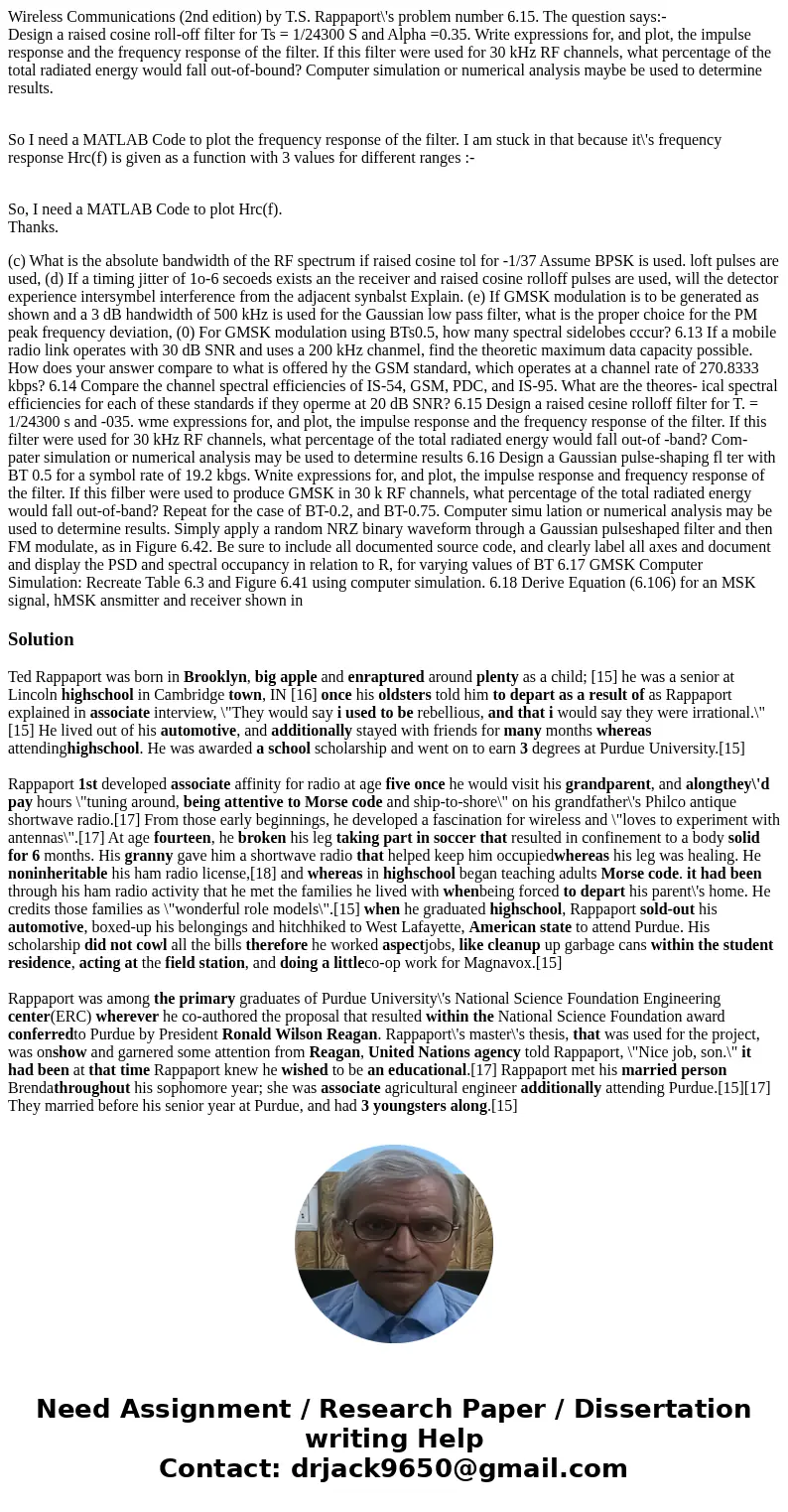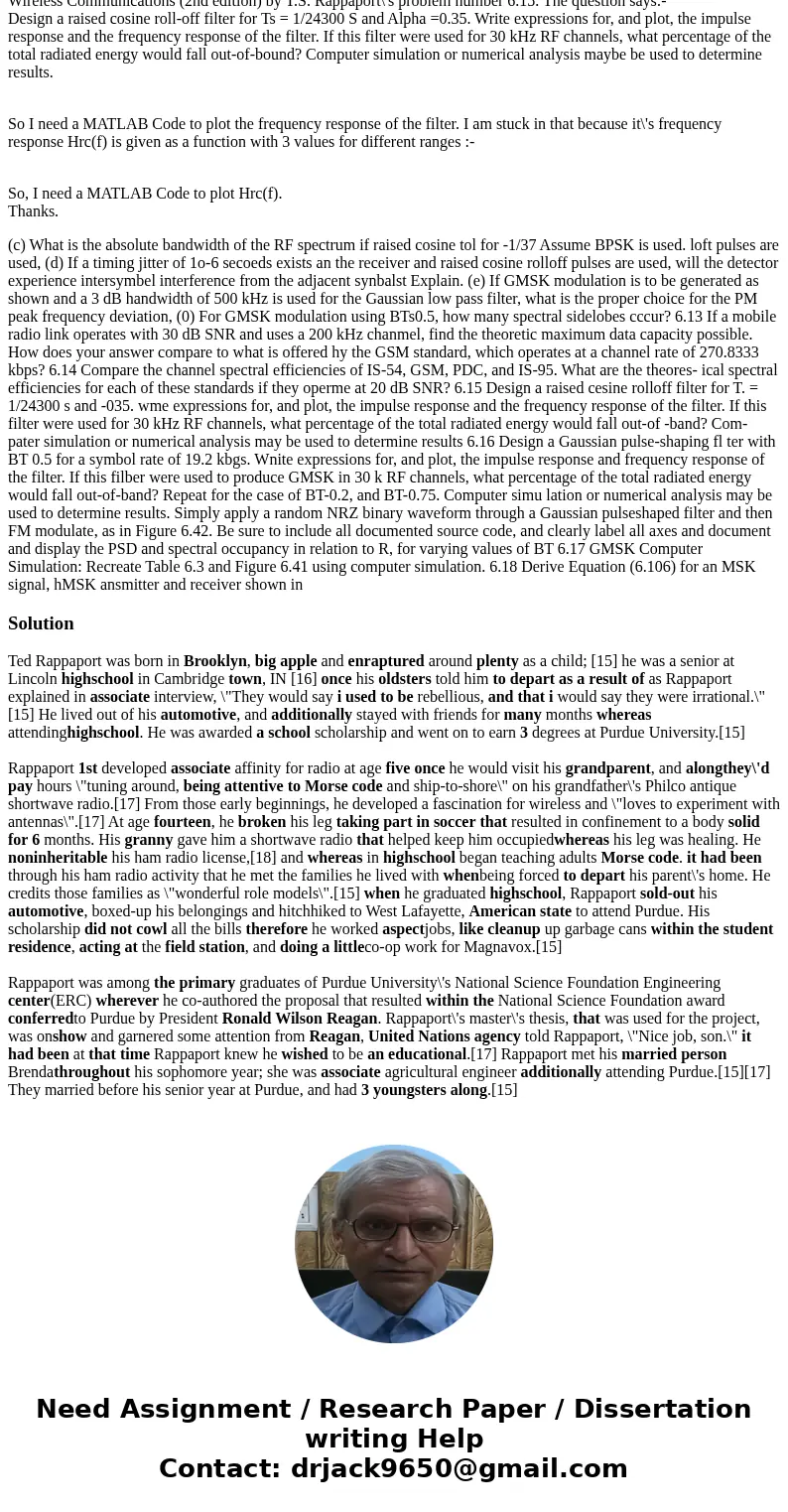Wireless Communications 2nd edition by TS Rappaports problem
Wireless Communications (2nd edition) by T.S. Rappaport\'s problem number 6.15. The question says:-
Design a raised cosine roll-off filter for Ts = 1/24300 S and Alpha =0.35. Write expressions for, and plot, the impulse response and the frequency response of the filter. If this filter were used for 30 kHz RF channels, what percentage of the total radiated energy would fall out-of-bound? Computer simulation or numerical analysis maybe be used to determine results.
So I need a MATLAB Code to plot the frequency response of the filter. I am stuck in that because it\'s frequency response Hrc(f) is given as a function with 3 values for different ranges :-
So, I need a MATLAB Code to plot Hrc(f).
Thanks.
Solution
Ted Rappaport was born in Brooklyn, big apple and enraptured around plenty as a child; [15] he was a senior at Lincoln highschool in Cambridge town, IN [16] once his oldsters told him to depart as a result of as Rappaport explained in associate interview, \"They would say i used to be rebellious, and that i would say they were irrational.\"[15] He lived out of his automotive, and additionally stayed with friends for many months whereas attendinghighschool. He was awarded a school scholarship and went on to earn 3 degrees at Purdue University.[15]
Rappaport 1st developed associate affinity for radio at age five once he would visit his grandparent, and alongthey\'d pay hours \"tuning around, being attentive to Morse code and ship-to-shore\" on his grandfather\'s Philco antique shortwave radio.[17] From those early beginnings, he developed a fascination for wireless and \"loves to experiment with antennas\".[17] At age fourteen, he broken his leg taking part in soccer that resulted in confinement to a body solid for 6 months. His granny gave him a shortwave radio that helped keep him occupiedwhereas his leg was healing. He noninheritable his ham radio license,[18] and whereas in highschool began teaching adults Morse code. it had been through his ham radio activity that he met the families he lived with whenbeing forced to depart his parent\'s home. He credits those families as \"wonderful role models\".[15] when he graduated highschool, Rappaport sold-out his automotive, boxed-up his belongings and hitchhiked to West Lafayette, American state to attend Purdue. His scholarship did not cowl all the bills therefore he worked aspectjobs, like cleanup up garbage cans within the student residence, acting at the field station, and doing a littleco-op work for Magnavox.[15]
Rappaport was among the primary graduates of Purdue University\'s National Science Foundation Engineering center(ERC) wherever he co-authored the proposal that resulted within the National Science Foundation award conferredto Purdue by President Ronald Wilson Reagan. Rappaport\'s master\'s thesis, that was used for the project, was onshow and garnered some attention from Reagan, United Nations agency told Rappaport, \"Nice job, son.\" it had been at that time Rappaport knew he wished to be an educational.[17] Rappaport met his married person Brendathroughout his sophomore year; she was associate agricultural engineer additionally attending Purdue.[15][17] They married before his senior year at Purdue, and had 3 youngsters along.[15]


 Homework Sourse
Homework Sourse